

Parasitology
Lac: 1
Lecturer: khalidah Kareem
Phylum Platyhelminthes [Flat worm]
•Class Cestoda [Tapeworms]
•Trematoda [Flukes]
Class cestoda [tapeworms]
Objective
To study the causative parasites of tape worm
infection, morphology, life cycle, clinical symptoms and
diagnosis for
•Hymenolepis nana [Dwarf tape worm]
•Hymenolepis diminuta [Rat tapeworm ]
•Dipylidium caninum [Dog tape worm ]
Diphyllobothrium latum [Fish or Broad tape worm ]

Platyhelmithes- class: cestoda
Hymenolepis nana
Dwarf tapeworm

H.nana is the smallest tape worm ,the
adult is 25-40mm in length
cause dwarf tape worm infection

Habitat
:in the upper 3/4
th
of the ileum [ i.e.
small intestine of human ]
Sclex
: is globular in shape ,provided with four
muscular suckers and rostellum with one row of
hooklets
Proglottids
are wider than they are long, there
are 3 types of proglottid
Immature , mature and gravid
Mature segments
consisted of one set of male
reproductive organ and one set of female
reproductive organ ,genital pore mide lateral
located on one side
Gravid
segments compose of sac like uterus
filled with eggs .
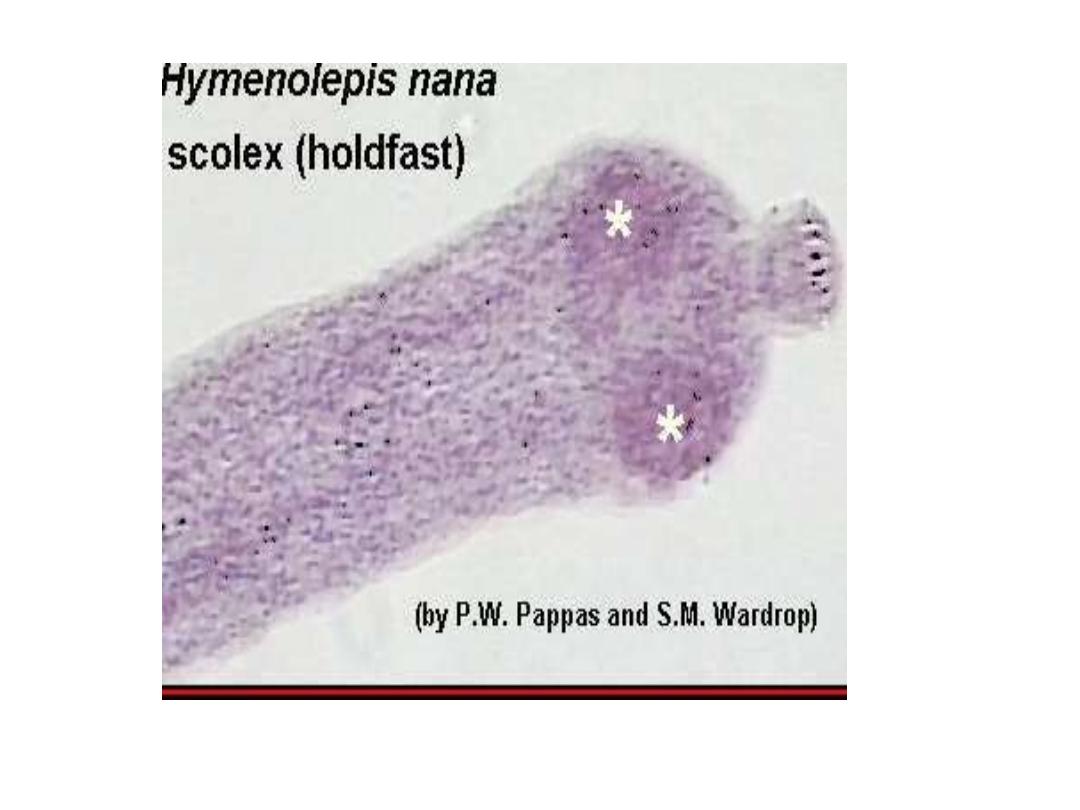
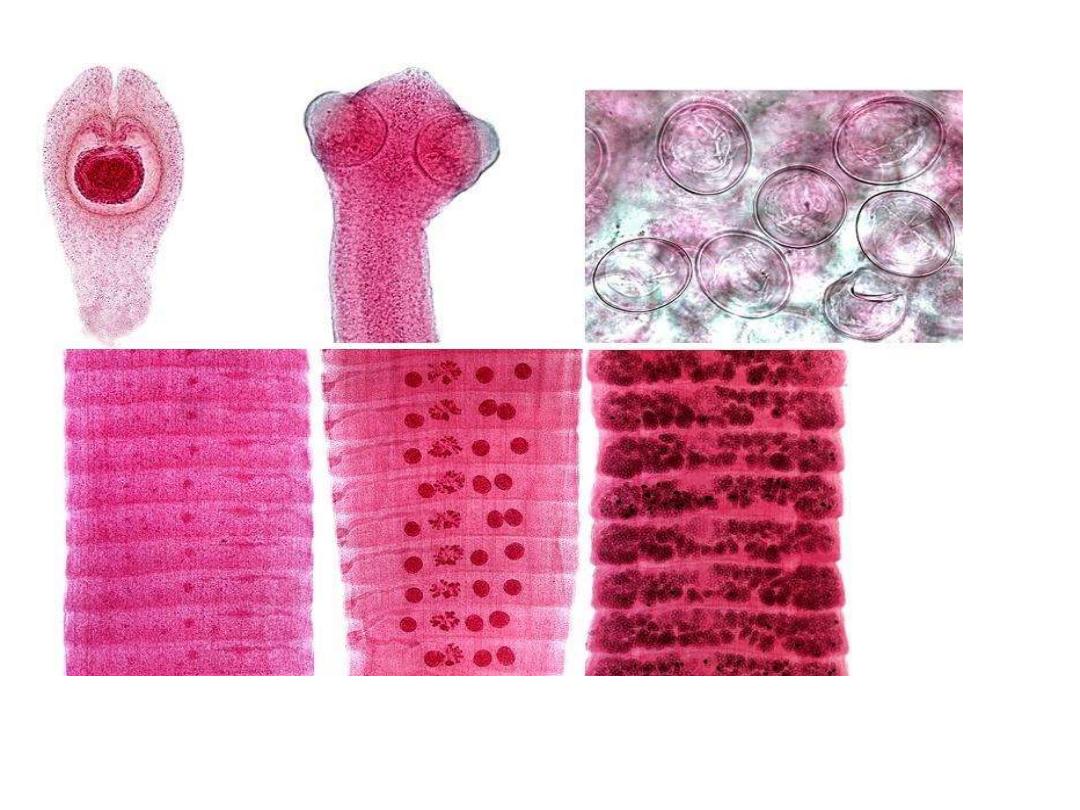
Immature mature gravid
segments
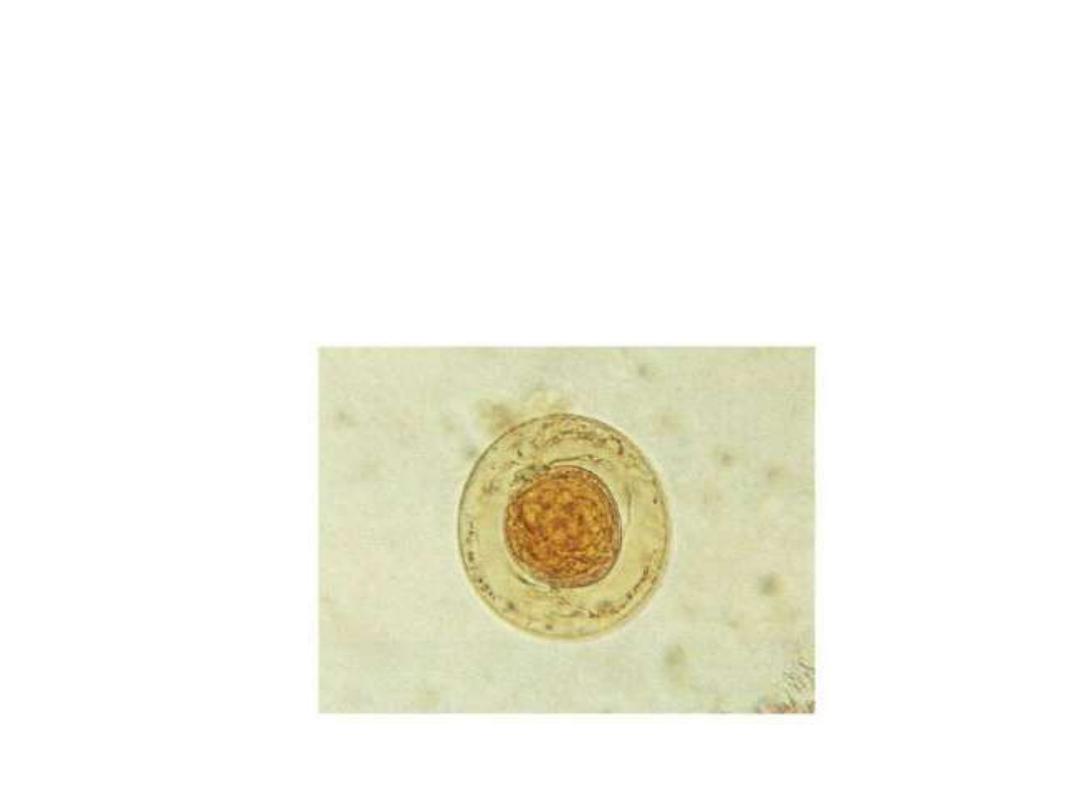
Egg
is spherical ,transparent and small, it
measures 45µm by 38µm in size
Hexacanth
embryo in the center surrounded by
two membranous shell ,the inner one have two
polar thickenings each one provided with 4-8 polar
filaments

Cysticercoid larvae
Scolex
Caudal tail

Life cycle
H. nana have direct ,and indirect life cycle in
murine strain
Human acts as final and intermediate host
Flea and beetle can acted as intermediate host
Autoinfection
[internal &external]
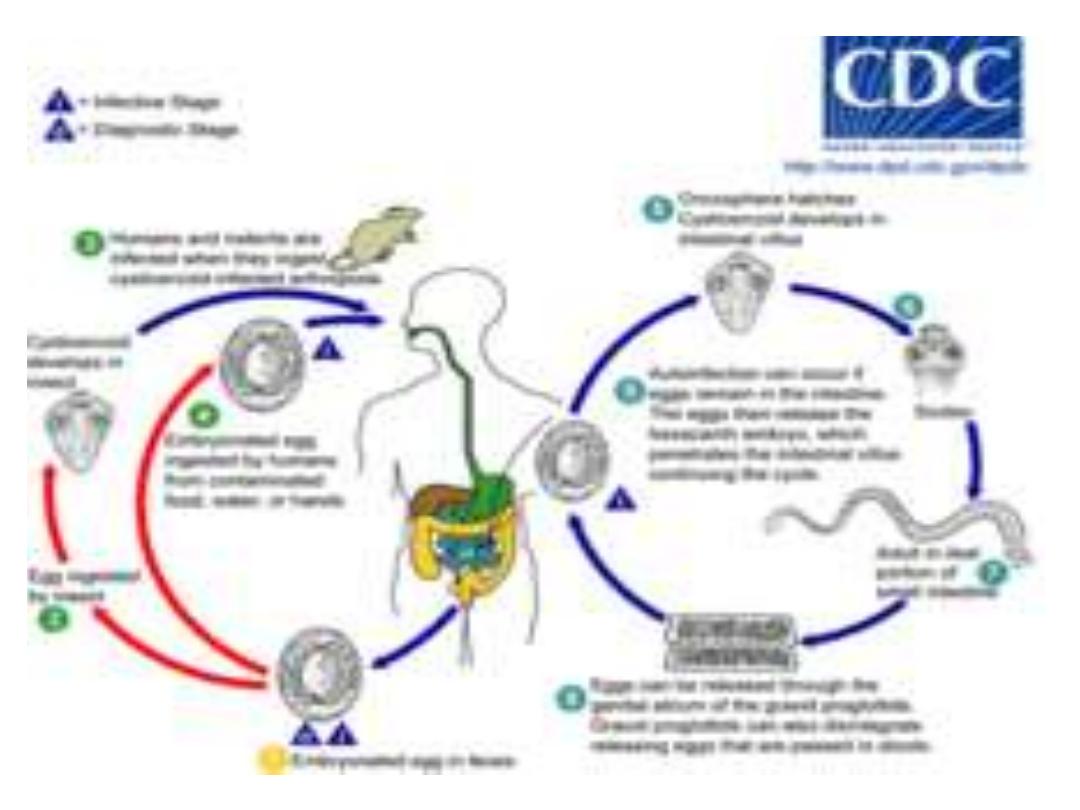
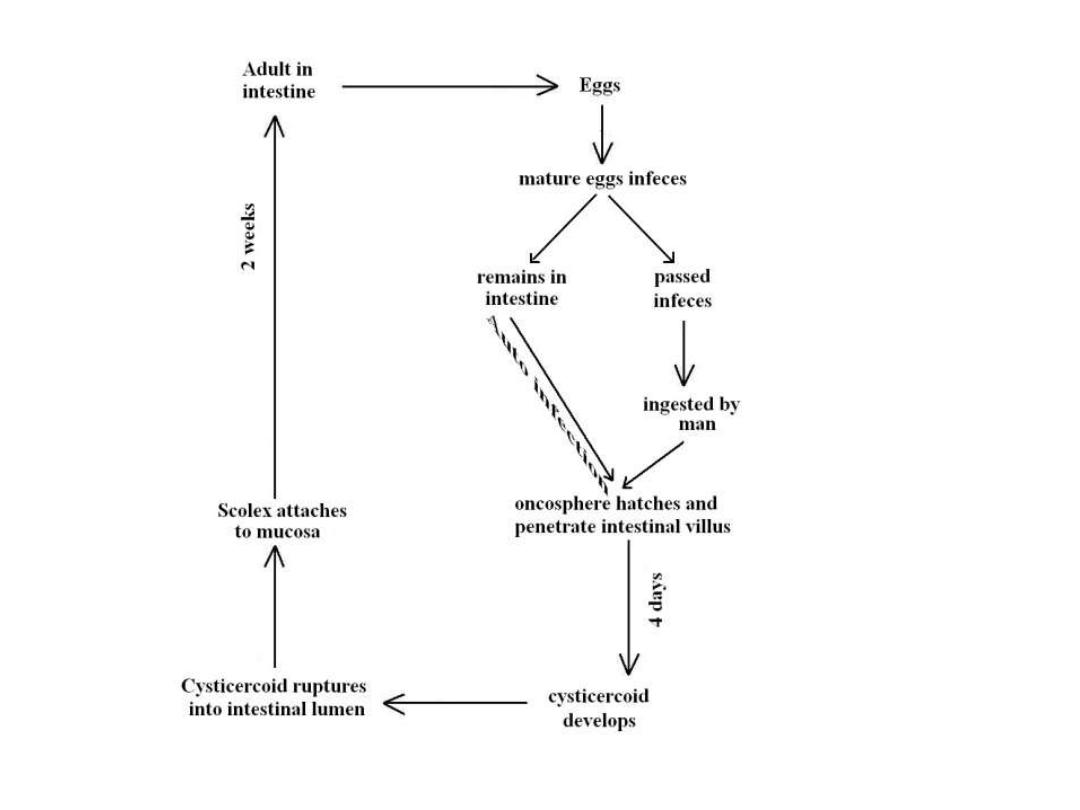

Pathogenesis &symptomatology
H. nana infection cause mechanical
irritation and allergic manifestation.
H. nana infection produces no
detectable symptoms but in case of
heavy infection it may cause diarrhea
,abdominlpain anorexia &nervous
disorders

Diagnosis
Demonstration of egg in
stool [G.S.E]
direct microscopic
examination
Concentration methods
Treatment :-
Praziquntal
is drug of choice
Niclosamide is alternative
therapy.



Platyhelmithes- class: cestoda
Hymenolepis dimiuta
Rat tapeworm

H. diminuta
cause rat tap worm infection
or hyminolepiasis diminuta
H. diminuta
is parasite of rat ,mice and
other rodents
Human ,usually children accidentally
infected
Rat tape worm infection is a zoonotic
disease

Adult worm is 20-60 cm in length ,lives in small
intestine
Scolex :club shape ,provided with four
muscular suckers and rudimentary rostellum
Proglottid
are wider than long in size
,there are 3 types of proglottid
Immature , mature and gravid
Mature segments
consisted of one set of
male reproductive organ and one set of
female reproductive organ ,genital pore
mide lateral located on one side
Gravid
segments compose of sac- like
uterus filled with eggs .
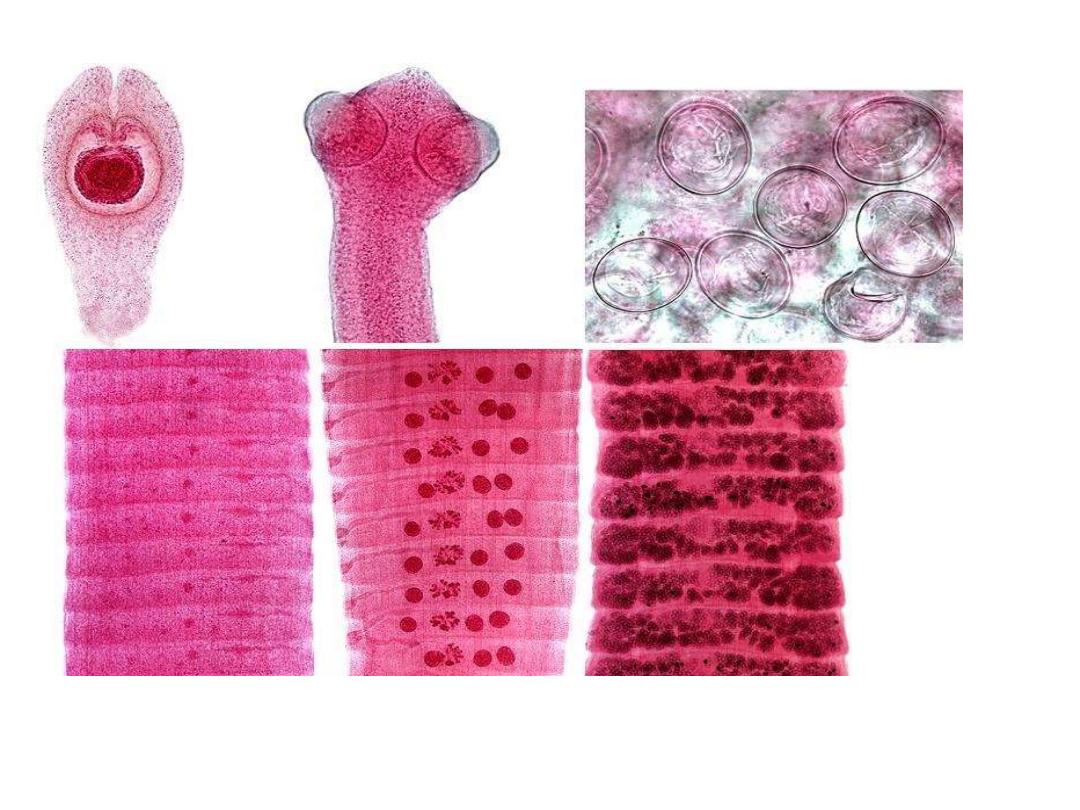
H. diminuta ,egg ,scolex.larvae,and segments
egg
scolex
larvae
Immature
Mature
Gravid
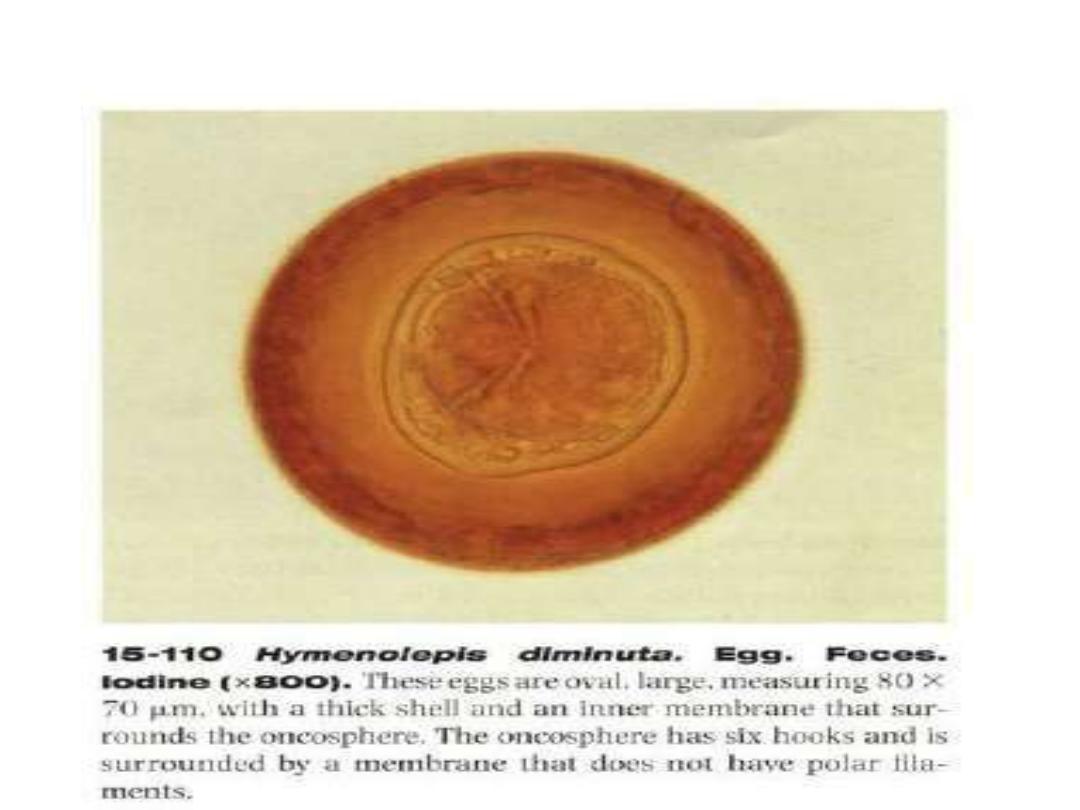

Egg :
Egg
: ovoid to sub-spherical in shape,
yellowish brown
in color, measures 55µmby
85µm in size, there is a considerable space
between the
striated brown
outer
membrane and the hyaline inner membrane.
Inner membrane is provided with a pair of
polar thickenings but lacks the polar
filaments.
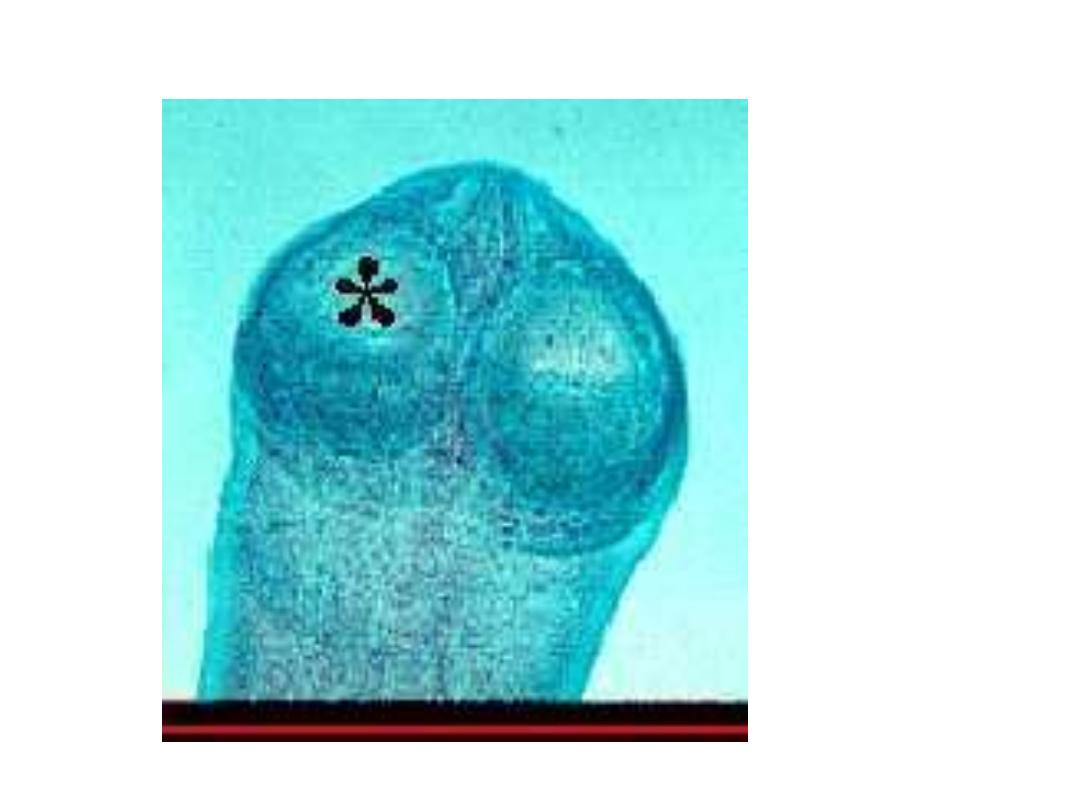
H. dimiuta scolex
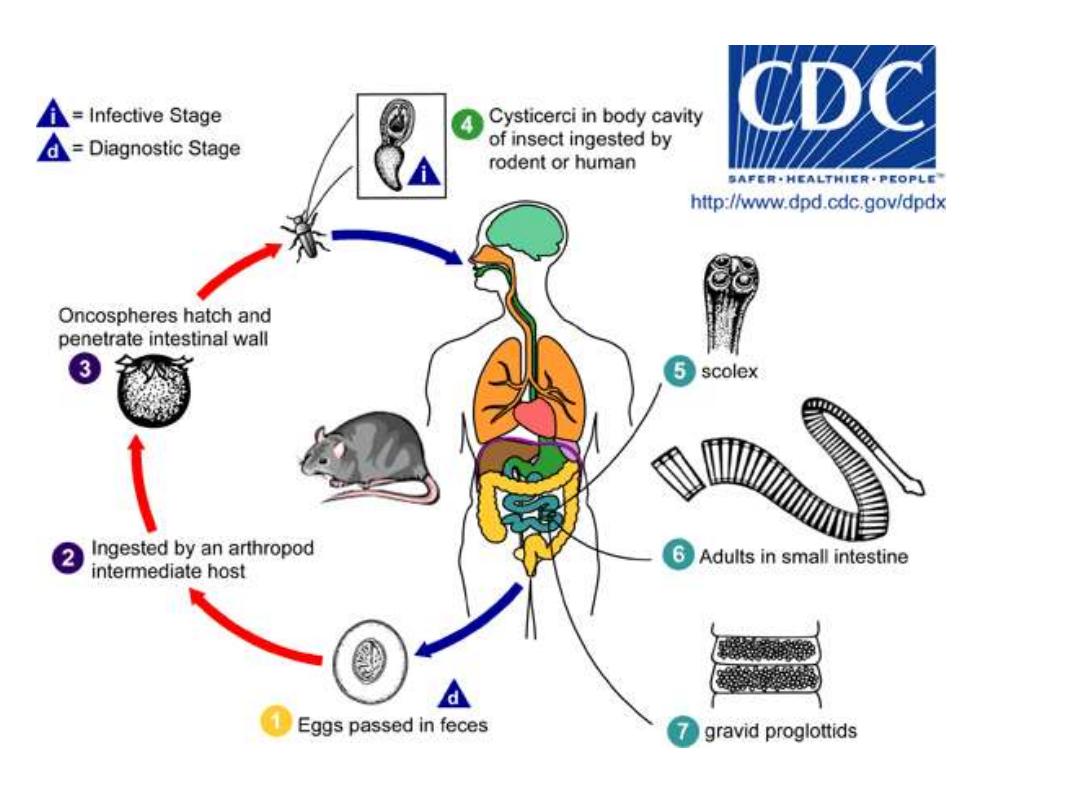
H. diminuta life cycle

-
Life Cycle
: when eggs voided in the feces
of definitive host ingested by an arthropod,
usually larval stage of fleas and beetles,
cysticercoids larva will be develop in the
arthropod, when the infected arthropod is
ingested by definitive hosts, cysticercoids is
digested out of its vector host and the
scolex attaches to the small intestine
mucosa and develops into adult worm.

-
Pathogenesis and Symptomatology
:
H. diminuta infection usually produces no
symptoms.
-
Diagnosis
: is made on the recovery of
typical eggs in the stool. [G.S.E]
Direct microscopic examination
Treatment:
Niclosamide is drug of choice,
Praziquntal is alternative therapy.


